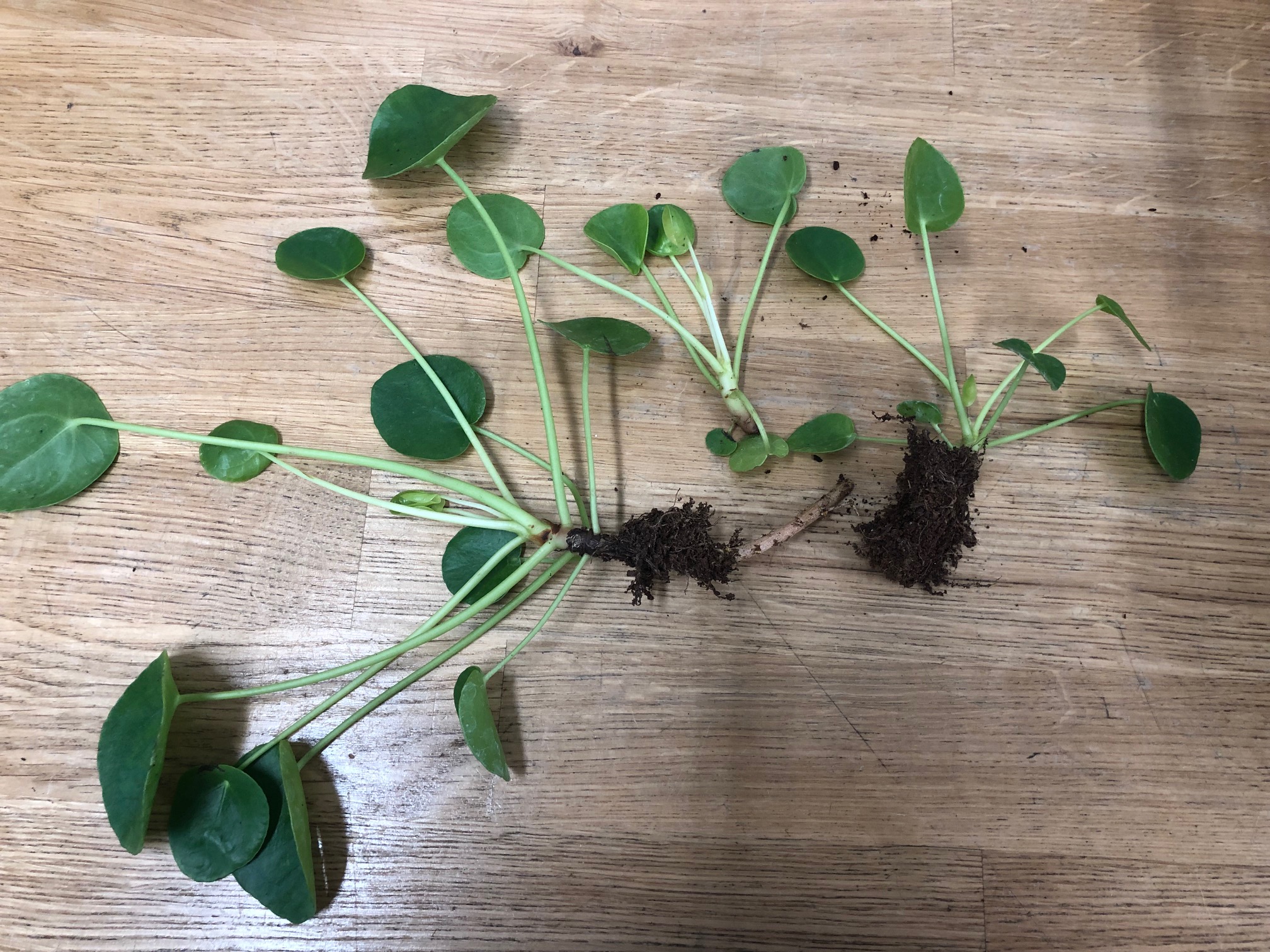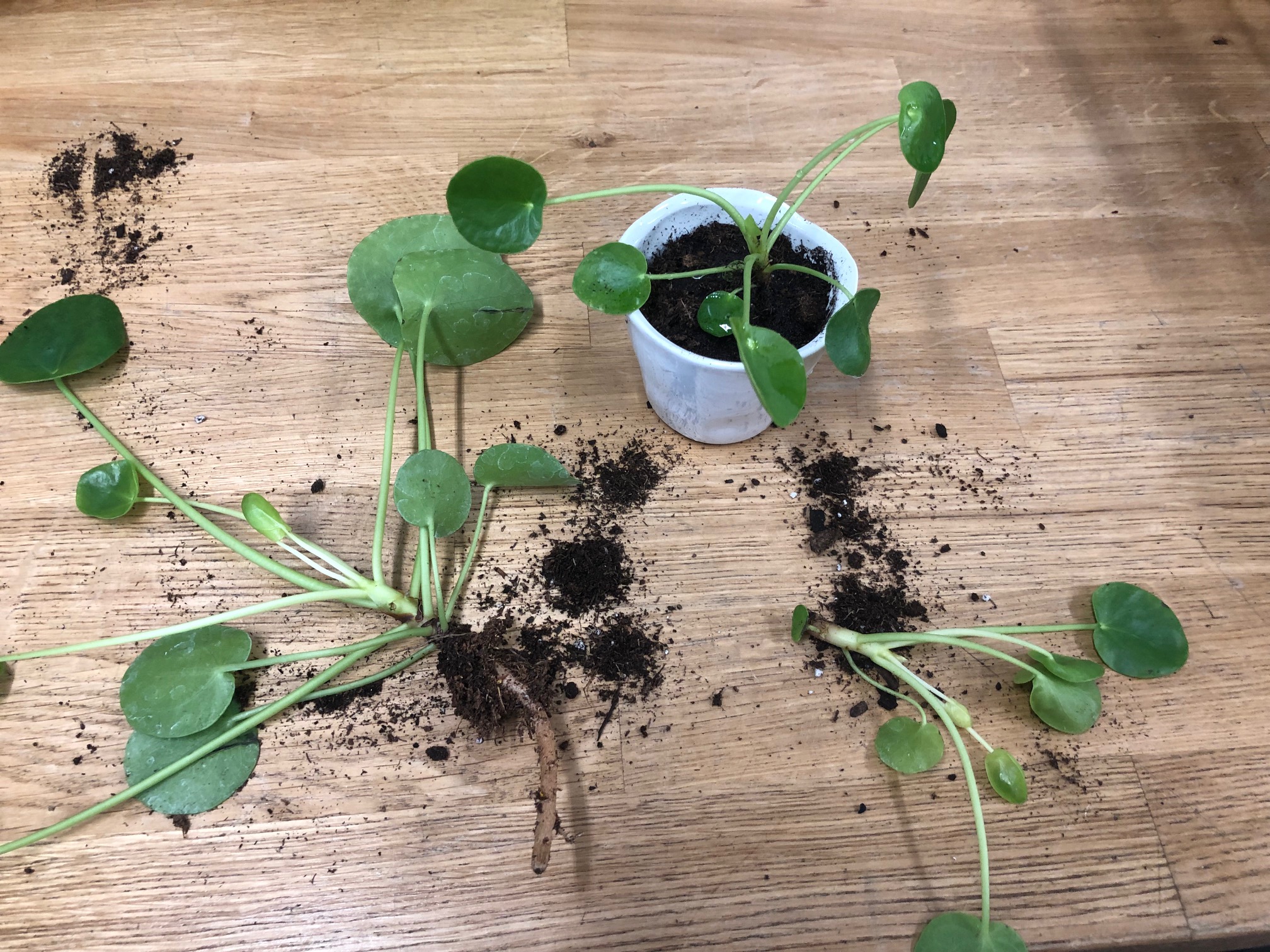They’re here, hurry!!!
I am very excited to report Rouvalis has Pilea plants in stock!! These awesome plants have been sprouting up all over social media, but as it turns out, are relatively difficult to find in stores (more on that in a minute). Well, as I mentioned, we’ve gotten ahold of some, so stop reading right now and get your cute plant loving self down to Rouvalis!!
Just kidding, I hope you didn’t stop reading because I have so much more to say and you should know how to take care of the Pilea first. These plants really got my nerdy botanist blood flowing, and a little research only made my interest grow.
We’ll start with care:
Pilea like bright indirect light best. They can do pretty well in slightly shadier situations but it is important to know that the direct rays of the sun can scorch the leaves. I recommend rotating the plant from time to time as they tend to grow towards the light and can become a bit lopsided, but maybe you’re into that (symmetry isn’t everything).
Plant your Pilea in a good rich soil, in a pot with drainage holes. It is important that the roots are not sitting in water, so drainage holes are key. It also wouldn’t hurt to mix in a little bark mulch to add aeration to the soil. It is good to let them dry out between watering but not overly. If you notice the leaves looking droopy, it is time to water. I wouldn’t call these plants difficult to care for by any means, although they do have a few Goldilocks characteristics. Light and water, but not too much or too little.
In short: Bright sunny window, water well once a week. Ish.
Now for some history and other interesting facts:
Pilea peperomioides is a plant of many names. Chinese money plant, sharing plant, pass-it-on plant, pancake plant, UFO plant, missionary plant, and I don’t doubt I’m missing a few. I assume the pancake and UFO nomenclature is in reference to the shape of the leaves. Sharing plant and Pass-it-on plant comes from how easy it is to propagate.
A happy plant will shoot off little sprouts and tubers that can be removed from the mother plant and planted on their own. Using a sharp knife, cut off one of the shoots. From there you can put the base in water until you start to see roots (a week or two), or just go directly into soil. Test it out and then pass these plants along to your fellow plant loving friends. Remember, sharing is caring.
Now for the part I think is really cool. In the late 70’s botanists and plant specialists started being asked all about these little plants, but there was virtually no scientific information about them. The Pilea was somewhat of a mystery to the great European horticultural societies. Seems this plant had secretly made its way onto windowsills in many different countries. The power of sharing, am-I-right?!. After what I assume must have been a very long line of “Oh, this old thing? I got it from so and so…”, pilea peperomioides was traced back to a single Norwegian missionary (missionary plant ahem ahem) who had been in the Yunnan province of China and brought a plant back to Norway with him in 1946. Thirty years of sharing sprouts finally got the attention of plant enthusiasts & scientists and now here we are in 2019 sharing this cutie on Instagram.
I am madly in love.




